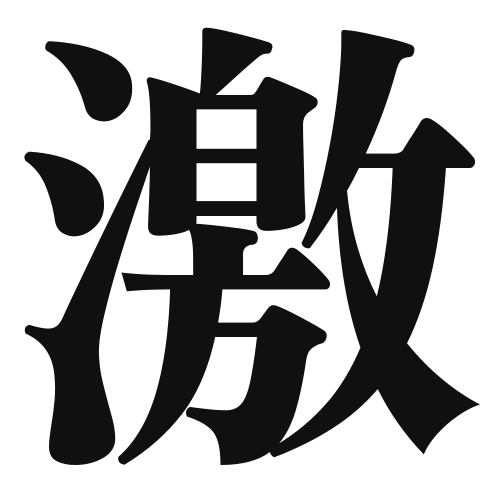1. Overview of Meaning
The kanji “激” (geki) means “intense,” “violent,” or “fierce.” It is often used to describe strong emotions, actions, or natural phenomena.
2. Formation and Radical
The kanji “激” is a phonetic-ideographic character (形声文字), which combines a meaning component and a sound component. The left part, “氵” (water radical), relates to water, while the right part, “激” (geki), suggests the sound and meaning of intensity.
The radical of “激” is “氵,” which is a variant of “水” (water), indicating that the character is often associated with water-related concepts.
3. Examples of Usage
Common words and phrases that include “激” are:
- 激しい (hageshii) – intense, violent
- 激怒 (geki-do) – rage, furious anger
- 激流 (geki-ryuu) – rapid current
Example sentence in daily conversation:
「彼は激しい感情を持っている。」 (Kare wa hageshii kanjou o motte iru.) – “He has intense emotions.”
4. Synonyms and Antonyms
Similar kanji with related meanings include:
- 強 (kyou) – strong, powerful (more general strength)
- 猛 (mou) – fierce, violent (often used for animals or storms)
Antonyms include:
- 穏やか (odayaka) – calm, gentle
- 平和 (heiwa) – peace, peacefulness
5. Cultural and Historical Background
The kanji “激” is often used in Japanese culture to describe natural disasters, such as typhoons or earthquakes, emphasizing their intensity. It appears in various proverbs and idiomatic expressions, such as:
- 激流に逆らう (geki-ryuu ni sakarau) – to go against a strong current, meaning to resist overwhelming circumstances.
This character reflects the Japanese appreciation for the power of nature and the emotional intensity found in human experiences.
